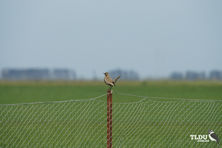
Shoppers Feedback:
Jan 17, 2017
Hello Ros,
I have now paid the invoice, but I would like to write to you just to say a big THANK YOU for getting me the Penguin!
The ChatterMate Penguin became a nice memory for me when I was in New Zealand, and I am so greatful to you for arranging so that I could have it! :-)
Thank you so much!!!!!!!!!!!
Regards,
Malin
Hi Ros,
Many thanks for your very kind email. I really appreciate your prompt reply!
I appreciate your advice regarding the decorations and customs. These are a gift for my daughter’s exchange student family so when she returns home on the weekend I will show her and see if she loves them as much as I do!
Thanks so very much again - I am truly grateful for your kind assistance.
Kind Regards
Bernadette
Ros,
Thanks again for the great customer service. It's a refreshing change!
Best regards,
Trevor
Hey Roz,
Thank you for your emails. Just loved my first order. The cute little Aussie bush critters are going to be used for an office Christmas decoration. My colleagues also liked them and talked about making an order to your site. I'll send you a photo when completed.
I'll be ordering more to send to my daughter's host family in America.
Fabulous service from you.
Kind regards,
Michelle
Thankyou. Order arrived today. One very happy grandson with his new beastly binoculars.
Regards,
Irene
- Home
- Wild Wonders
- Shop
- Aromas of Australia
- Australian Made
- Books
- Book Marks
- Christmas Decoration Sale
- Christmas Decorations
- Clocks
- Drink Holders
- Garden & Outdoor
- Gift Wrapping & Cards
- Home & Giftware
- Jewellery
- Keyrings
- New Products
- Pencils & Pen Holders
- Photo Frames
- Plush Toys
- Plush with Sound
- Sheepskin Rugs
- Stationery
- Stone Carvings
- Toys & Games
- Travel Goods
- Wedding
- Wild Figurines
- Wildlife Safety Products
- Wind Chimes
- Wine Charms
- View All Products
- Wildlife
- Australiana
- Explore
- Contact Us

Quick Facts
| Length: | 21 cm |
| Height: | - |
| Weight: | - |
| Colour: | Dusky brown back, pale brown-white underparts, centre of belly dark brown |
| Habitat: | Open country, pastures, short crops and grassy scrub |
| Food: | seeds and insects |
| Predators: | - |
| Status: | Not Present in Tasmania. Secure in all other states and territories of Australia |
The Brown Songlark is remarkable for the male being much larger (23-25 cm) than the female (18-19 cm). In breeding plumage the male is dark cinnamon-brown with black bill and black eyes. Otherwise the male and female both have a dusky brown back, pale brownish-white underparts, with the centre of the belly dark brown. The Brown Songlark is also known as the Australian Songlark.
The female Brown Songlark could be mistaken for the Rufous Songlark, female White-winged Triller, Skylark, or Richard's Pipit. Brown Songlarks are much larger than the Rufous Songlark and lack the rufous rump.
The Brown Songlark is found all over mainland Australia except for parts of the far north. It is more abundant in the south, but numbers fluctuate locally depending on rainfall.
The Brown Songlark is found in open country, including pastures, short crops, and grassy scrub.
The Brown Songlark is very nomadic, moving from drought-affected areas to areas of recent rainfall.
The Brown Songlark feeds on seeds and insects.
The nest of the Brown Songlark is in a small depression in the ground, often in a clump of grass or other cover. The female incubates the eggs and rears the young.
Like the Rufous Songlark, the Brown Songlark includes farm paddocks in its territory. Birds are occasionally killed by vehicles on roads.
Last Updated: Wednesday 17th July, 2013
BUSH e-TELEGRAPH
Signup for our monthly newsletter the "e-Telegraph"
Quick Links
Home | The Beginning | About The Land Down Under | Wild Wonders | Advertise on Wild Wonders | Christmas Decoration Sale | Christmas Tree Decorations | Drink Holders | Plush with Sound | Stone Carvings | Wildlife Wine Charms | Freebies | Australian Wildlife | Help Our Wildlife | Australiana | Photo of the Month | Explore The Land Down Under | Contact Us | Legal Notices

